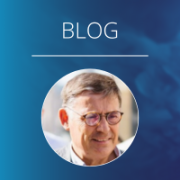How to cope with the interconnectivity trap?
| 09-08-2016 | Hans de Vries |

Electronic Banking has been here for more than thirty years now. And it certainly had a big impact on the way the corporates and banks communicate. Nevertheless, ever since the introduction Treasurers have been struggling to incorporate this feature into their IT ERP environment.
This struggle has proven to be a tough one, due to the ever changing internal ERP environment as a result of various versions of the same ERP system or even various ERP systems within the company due to take-overs/ mergers. And of course there was quite some turmoil in the banking industry itself: the introduction of the Euro, then SEPA with all new transaction formats and regulations, meanwhile a banking crisis etc. Moreover, the ever growing demands on security and compliance pose further pressure on the interconnectivity. As a result, it has become more and more difficult to keep all connections in place and up-to-date. Especially since most corporates are forced to spread their cash management business amongst multiple banks from a risk mitigating perspective. On top of that the Treasurer is facing a radically changed attitude towards data processing operations, from management but also business environment perspective. We now live in an internet world that does not allow for slacking reactions and inefficient procedures. Action is reaction and efficient reconciliation processes are the key for survival.
Treasurer gets stuck in the middle
To optimize this situation, the Treasurer usually finds himself squeezed between the limited IT budgets for optimizing the connections with his back office environment on the one end and his banks on the other with their multiple banking solutions. While SEPA was presented as a unifying power to align all European banks, in practice there still appears to be a great variety in approaches per bank. So therefore in practice, the Treasurers dreams of a flawless interconnectivity often proved to become nightmares and he most of the time winds up somewhere in the middle of an endless implementation process.
Is there a way out?
The answer is negative as long as the Treasurer remains dependent on the internal IT departments and the offered bank solutions. However, if the Treasurer wants to actively take control of this situation there are now options available that will provide the Treasurer with all the connections and security/ compliance checks he needs for his day to day cash management operations. Instead of using the internal systems, the Treasurer can have his back-office systems (ERP and TMS) connect to the banks via a bank independent (SaaS) platform that will take care of conversion and validation of the uploaded files, the authorization according to the internal compliance guidelines and the routing towards all corporate banks. At the same time the electronic bank statements will be collected and forwarded to the back-office systems for automatic reconciliation in the ERP (and TMS) environment. Apart from the authorization of the transactions, no manual intervention is needed.
Next week Hans will introduce you to his ‘way out’: the SaaS platform.











